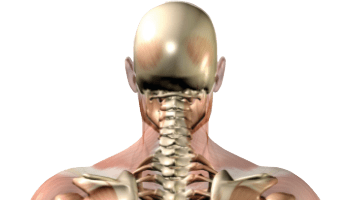Contents
What is Osteopathic treatment?
Osteopaths use their hands, both to investigate the underlying causes of pain and to carry out treatment using a variety of manipulative techniques. These may include the comfortable stretching of muscle and ligament, rhythmic joint movements or joint manipulation to improve the range of movement of a joint. Gentle releasing techniques are often used, particularly when treating children or elderly patients. Osteopaths employ a wide range of treatment methods depending on your age, physique and particular problem.
First Consultation
At your first appointment a full medical case history will be taken including details of your symptoms, your general health and passed medical history.
Next an examination will be carried out. This will involve assessment of your posture movement and muscle tone. For this you may be asked to perform some simple movements and remove parts of you’re clothing depending on the area of your problem. The osteopath will then examine the symptomatic and related areas with his highly developed sense of touch called palpation, looking for tenderness and restrictions.
Following Appointments
Second and subsequent appointments involve a re-examination followed by a longer treatment.
On your return appointments you will be asked about your progress. Most patients see good improvements in their symptoms within three treatment sessions. If this is not happening then you may be referred to your GP for further tests.
Osteopathic Treatment for Foot & Knee Pain
It is well known that if your feet are not performing properly (their biomechanics) it can not only lead to foot pain, but a host of other complaints, such as:
- Localized foot pain
- Bunions
- Hammer toes
- Arch/heel pain
- Leg/knee pain
- Hip and back pain
What do my feet have to do with it?
Your feet have a direct impact on the rest of your body. Like the foundation of a house, your feet support the weight of everything above them. When a small problem develops in your feet, a subtle change in the way you walk will cause a chain reaction of adjustments in your posture and walking and running mechanics. These changes can put stress on joints higher up in your body, and lead to more serious problems. By using custom made orthotics your feet can be rebalanced, reducing pain and discomfort and returning you to your natural stride pattern.
Our Advanced Diagnostic Equipment
To help provide the best and most accurate treatment within the clinic, I have recently invested in state of the art computerised foot scanning technology, called TOG GaitScan System. By having the patient simply walk over an electronic sensor pad, this system detects how your weight is distributed over your feet, highlighting any areas that may indicate a potential problem. With this information, an orthotic innersole can be produced, supporting and correcting any problems detected. The innersoles we produce are constructed from a material called Thermoplastic which, when compressed, will always spring back to its original shape, and will not degenerate with age. Therefore, our orthotics will support you for up to 10 years without needing to be replaced.

